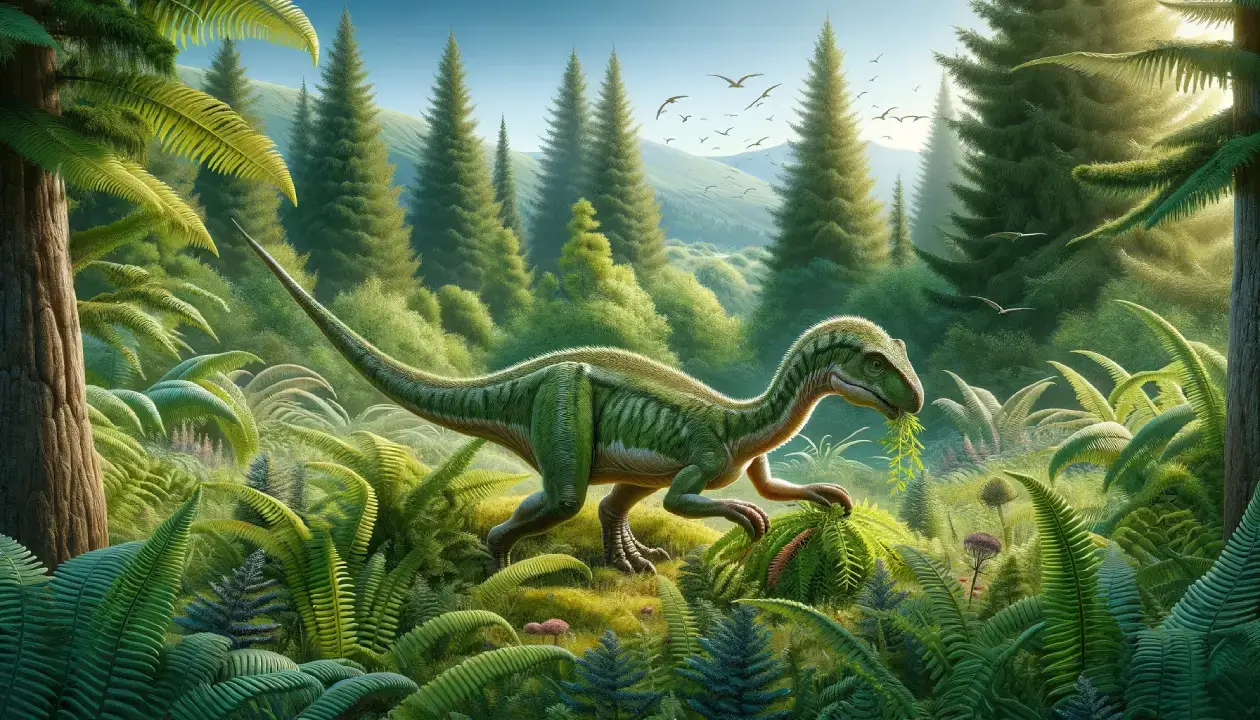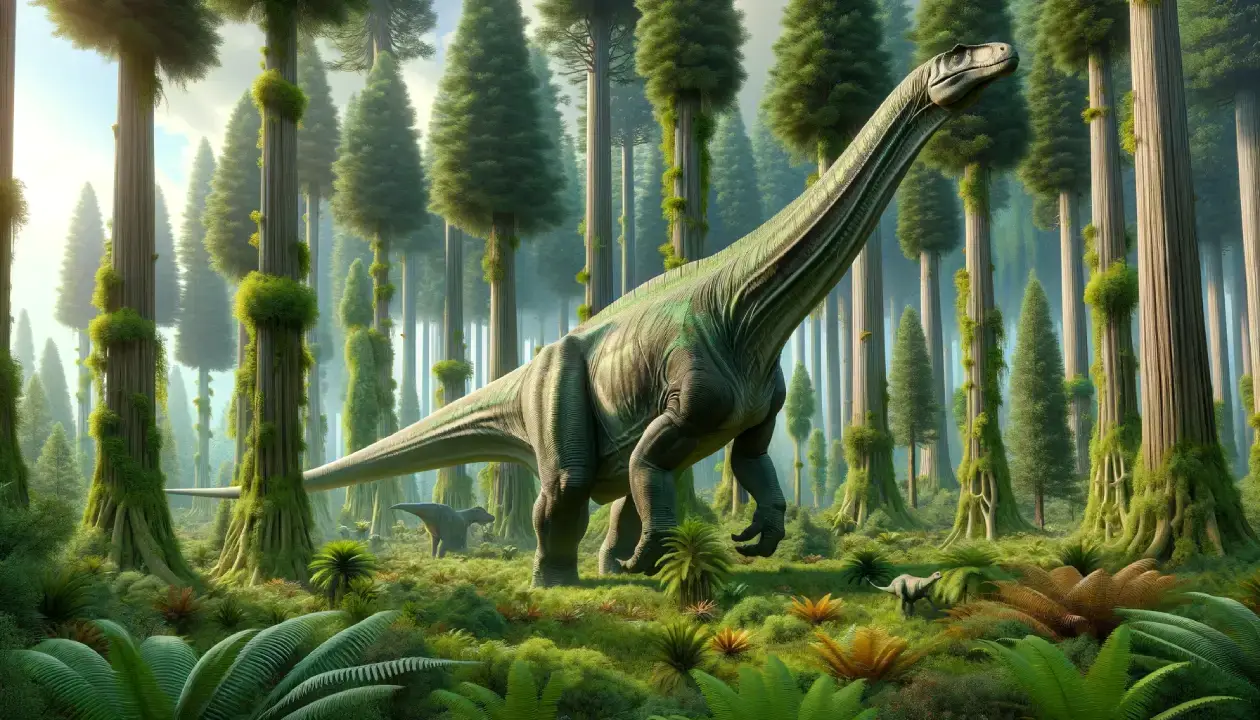Dicraeosaurus was a sauropod dinosaur that lived in Tanzania during the Late Jurassic period, about 150 million years ago. It was one of the first dinosaurs scientifically investigated from Africa, and had a relatively complete skull. It had a tall crest on its neck that formed a rough “Y” shape.
Basic Information
| Feature | Details |
| Time Period | Late Jurassic (154 – 150 million years ago) |
| Diet | Herbivore |
| Length | 15 meters (49 feet) |
| Weight | 4.4 tons (8,800 pounds) |
| Size | Large |
| Posture | Quadrupedal |
| Locations | Tanzania |
| Continent | Africa |
| Type | Sauropod |
| Habitats | Forests and plains |
Description of Dicraeosaurus
Historical Context
Dicraeosaurus was one of the earliest members of the family Dicraeosauridae, a group of sauropods with distinctive double-forked neural spines. It was named by Werner Janensch in 1914, based on a partial skeleton found in a clay pit in Dashanpu, China. The name means “double-forked lizard” and refers to the shape of the spines on its back. The first fossil was described as Omosaurus armatus, but later renamed Dicraeosaurus hansemanni to avoid confusion with another dinosaur. A second species, D. sattleri, was named in 1929 based on another specimen from the same locality.
Physical Attributes
Dicraeosaurus was a large dinosaur, measuring about 15 meters in length and weighing about 4.4 tons. It had a robust body with four sturdy legs and a long tail. Its head was small and narrow, with a beak-like mouth and long, serrated teeth. Its most notable feature was its double-forked neural spines, which projected upward from its vertebrae. These spines likely supported a sail-like structure of skin and muscle that may have been used for display or regulating body temperature. Dicraeosaurus also had a long neck, which had 12 unusually short vertebrae, and a relatively short tail. Its legs were columnar and ended in broad, hoof-like feet. Its skin was scaly and had polygonal patterns.
Feeding Habits
Dicraeosaurus was a herbivore that fed on low-growing plants and shrubs. It used its beak to snip off branches and leaves and its teeth to strip and grind them. It had a large gut that could digest tough plant material. It may have also swallowed stones to help with digestion, as some gastroliths (stomach stones) have been found associated with its fossils. Dicraeosaurus may have lived in herds or groups for protection and social interaction.
Unique Features
One of the unique features of Dicraeosaurus was its double-forked neural spines, which gave it a distinctive appearance among sauropods. Its skull was deep and wide, with prominent cheekbones and eye sockets. Its nostrils were placed high on the skull, suggesting that it could breathe while partially submerged in water. Another unique feature of Dicraeosaurus was its neck flexibility. Unlike most other sauropods, which had stiff necks supported by tendons, Dicraeosaurus had a more flexible neck that could bend from side to side. This may have given it more maneuverability and agility, as well as allowing it to reach different heights of vegetation.
Movement and Speed
Dicraeosaurus was a fast runner for its size, capable of reaching speeds of up to 30 kilometers per hour (19 miles per hour). It had long and powerful hind legs that propelled it forward. Its forelimbs were shorter and had four fingers each. It could use them to grasp food or support itself when resting. Dicraeosaurus also had good balance and coordination, thanks to its long tail that acted as a counterweight.
Cultural Impact
Dicraeosaurus has been featured in several books, movies, games and toys as one of the most impressive sauropods. It has appeared in popular media such as Jurassic World Evolution, Walking with Dinosaurs, Primeval, and Jurassic Park: Operation Genesis. It has also been displayed in many museums around the world, such as the Natural History Museum in London, where a life-sized model of Dicraeosaurus is exhibited.
Interesting Facts
- Dicraeosaurus is related to other spiked sauropods such as Amargasaurus, Brachytrachelopan, and Suuwassea. They are collectively known as dicraeosaurids.
- Dicraeosaurus may have had sexual dimorphism or individual variation in its neural spines, as some specimens show different shapes and sizes of these structures.
- Dicraeosaurus lived alongside other dinosaurs such as Allosaurus, Diplodocus, Camptosaurus, and Iguanodon. They all inhabited the Morrison Formation, a rich fossil site in North America.
Related Dinosaurs
- Troodon : A small, feathered carnivore known for its speed and agility.
- Triceratops : A herbivore with three horns and a large frill, often considered the nemesis of the T-Rex.
- Brontosaurus : A massive, long-necked herbivore that towered over most other dinosaurs.






